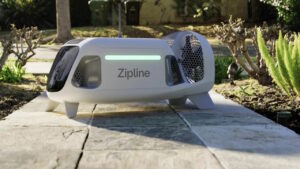

Unmanned aerial systems (UASs) face the obstacle of negative public perception. VRAC researchers Robert Philpott, a graduate student in Aerospace Engineering and Human Computer Interaction (HCI), and Professor Eliot Winer have created a model that measures infringement, defined as encroachment or trespassing of civilian privileges and rights, to see how it can be quantified and what values may look like for different operational scenarios.
This project was one of the first attempts to quantify measures such as privacy, trust, and annoyance of widespread UAS operations in a civilian environment.
Unmanned aerial systems (UASs) have been proven to have many valuable applications within civilian airspace such as structural health monitoring, police surveillance, photojournalism, and aerial photography. An obstacle that is prevalent against widespread UAS use in civilian airspace is negative public perception. In addition to privacy concerns, there are concerns around the safety and annoyance of UASs in consistent operation in a populated civilian environment. The developed model combines these concerns into a mathematical representation that can be used as a decision aid for various applications, such as specific operations to general policies around UASs in civilian airspaces.
A value driven design (VDD) model was created to attempt to combine all the concerns of the public around UAS operations concerning safety, privacy, and annoyance. Random simulation, sensitivity analysis, and a use-case scenario were utilized to determine what variables of an operation drive the infringement of a UAS operation. This simulation and analysis provided an initial look at what infringement values may look like. Fleet size, distance of the UAS to a building, and duration of the operation (inside of structure bubble and outside of it) were determined to be the major drivers of infringement based on analysis of the results.

The value model was constructed from the perspective of a person and/or environment being infringed upon in three different ways: safety, privacy, and annoyance. Measurable attributes were combined to create equations to compute value measures of infringement. After each component of the infringement value model was defined, analysis was conducted on generated potential solutions from the overall model. This analysis serves to provide initial infringement values for various scenarios, begin the discussion around a “good” and “bad” infringement values based on an operation, and begin to illustrate where changes should be made within an operation to keep infringement low.
Through the model of taking measurable attributes and converting them to values aimed to quantify infringement, efforts can be made to make UASs more favorable to a general population.

Publications
Philpott III, Robert, and Eliot Winer. “Modeling Public Concerns for Unmanned Aerial System Operations in the National Airspace System.” Journal of Air Transportation (2023): 1-9.
https://arc.aiaa.org/doi/full/10.2514/1.D0346